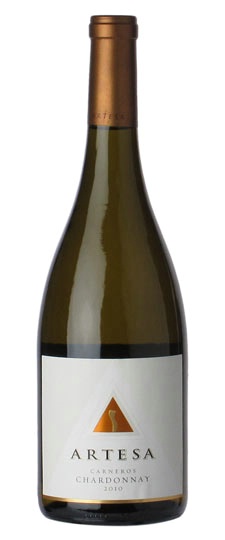
External search
Google (images)
Wine Advocate
Wine Spectator
Burghound
Wine-Searcher
Vintages
2019
2018
2017
2016
2015
2014
2013
2012
2011
2010
2009
2008
2006
2005
2004
2003
2002
N.V.
From this producer
Show all wines
All tasting notes
|
| Drinking Windows and Values |
| Drinking window: Drink between 2012 and 2016 (based on 19 user opinions) |
| Community Tasting History |
| Community Tasting Notes (average 85 pts. and median of 89 pts. in 3 notes) - hiding notes with no text | | | Tasted by Parnelli on 2/16/2013 & rated 89 points: Dreamsicle in a bottle. Just enough oak to give it a creaminess without being a butterbomb. Enjoyable and balanced with some nice tropical fruit. (732 views) | | | Tasted by Baron Slick on 7/28/2012 & rated 89 points: Light straw; faint tropical nose; rich and creamy with a fine texture; pineapple and stonefruit, orange blossom and vanilla; fluid and full of vigor. Very good. (843 views) |
| Artesa Producer website
In the 1980s, the historic Spanish winemaking family Codorníu Raventós began to acquire and develop vineyard land in the Carneros region of Napa Valley.
Opened in 1991 as Codorníu Napa, a sparkling wine house, the winery ultimately transitioned to producing still wines as successive vintages revealed the
quality and potential of the family’s vineyard holdings. The winery was renamed Artesa – Catalan for “handcrafted” – in 1997, and has since become a leading
producer of artisan wines from the varietals for which Carneros and Napa Valley are best known: Chardonnay, Pinot Noir and Cabernet Sauvignon. Codorníu
Raventós is still family owned and is the oldest company in Spain with a winemaking legacy in the Penedès region near Barcelona that dates back to 1551.
Today, Codorníu Raventós owns wineries in Spain, Argentina and California, and brings generations of expertise to Artesa.Chardonnay The Chardonnay GrapeEstateIn the United States, "Wines with “estate bottled” designations must: a) also designate an appellation of origin or an AVA, and both the vineyards and the winery must be located there; b) the grapes must come from vineyards owned or controlled by the winery; and c) the wine must have been produced, from crush to bottle, in a continuous process without leaving the winery’s premises."
- WINE LABEL FAQS: A QUICK SUMMARY OF LABEL DESIGNATION RULES" by David E. StollUSAAmerican wine has been produced since the 1500s, with the first widespread production beginning in New Mexico in 1628. Today, wine production is undertaken in all fifty states, with California producing 84% of all U.S. wine. The continent of North America is home to several native species of grape, including Vitis labrusca, Vitis riparia, Vitis rotundifolia, and Vitis vulpina, but the wine-making industry is based almost entirely on the cultivation of the European Vitis vinifera, which was introduced by European settlers. With more than 1,100,000 acres (4,500 km2) under vine, the United States is the fourth-largest wine producing country in the world, after Italy, Spain, and France.California2021 vintage: "Unlike almost all other areas of the state, the Russian River Valley had higher than normal crops in 2021, which has made for a wine of greater generosity and fruit forwardness than some of its stablemates." - Morgan Twain-Peterson Napa / SonomaSONOMA: The Yorkville Highlands AVA, approved in 1998, is located in the southwestern corner of Mendocino County, between Sonoma County's Alexander Valley to the South and Mendocino County!s Anderson Valley to the North. The region is 25 miles long, roughly in the shape of rectangle and bisected by Highway 128 which runs the length of the AVA. The region!s terrain is hilly and forested, with elevations ranging from 1,078 to 2,442 feet above sea level.
The distinguishing features of the Yorkville Highlands AVA are rocky soils with a high gravel content and the climate, which is cooler than Alexander Valley but warmer than Anderson Valley, and significantly cooler at night than the surrounding areas.CarnerosStraddles the southern ends of Napa & Sonoma Counties. |
|




